Managing Editor, Features and Multimedia
AI, Shifting Supply Chains Dominate Discussion at Manifest
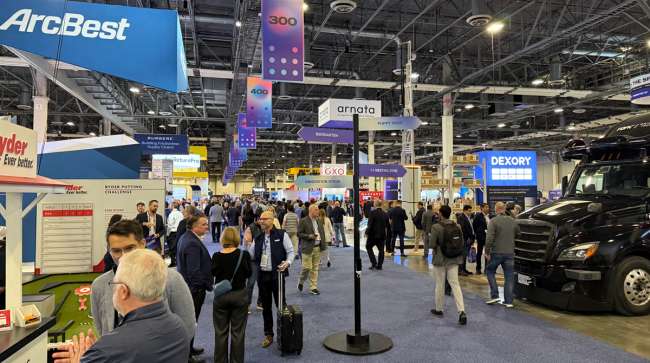
[Stay on top of transportation news: Get TTNews in your inbox.]
LAS VEGAS — Advances in artificial intelligence and shifts in global trade dominated the dialogue and the show floor at the 2025 Manifest supply chain and logistics technology conference.
Exhibitors and speakers at the annual event, held here Feb. 10-12, presented innovations and shared strategies aimed at helping transportation companies adapt to a changing business environment.
To remain competitive in the years ahead, transportation and logistics leaders will need to successfully navigate numerous variables, said Patrick Kelleher, CEO of DHL Supply Chain North America, during a main stage presentation.
Those variables include trade policy and tariffs, expanding digitization, the growth of e-commerce, environmental sustainability and attracting a new generation of workers.
“We know the world around us is changing,” Kelleher said. “There are so many things that need to be taken into account as we plan for success.”
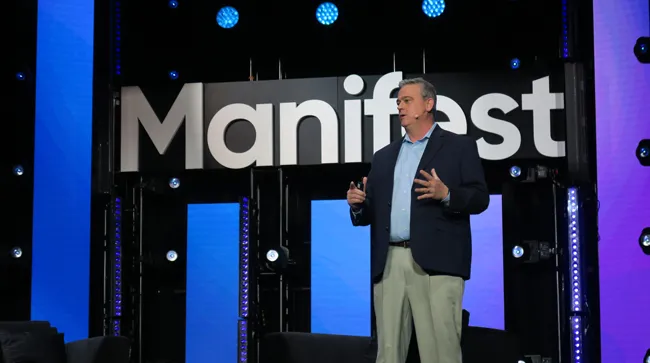
Kelleher outlines the top trends redefining global logistics during a presentation at Manifest 2025. (Seth Clevenger/Transport Topics)
While new tariffs — or the threat of them — under the second Trump administration are creating uncertainty for international supply chains, Kelleher said that global trade will continue to grow.
“The things we’re hearing today about tariffs are not new, and are not going to go away,” he said. “As an industry, we need to focus on how we’re adapting to that as a variable in trade, and making sure we’re finding the best path for our customers as we’re moving forward.”
Kelleher also said the length of supply chains is increasing, with more handoffs as goods are shipped to more locations before final products reach their destinations.
Host Seth Clevenger and TT's Connor Wolf discuss CES 2025 and the emerging technologies that could push the trucking industry forward. Tune in above or by going to RoadSigns.ttnews.com.
“Those handoffs create complexity in the supply chain,” he said. “It is driving a need for visibility.”
Meanwhile, the ever-present threat of cyberattacks means that businesses will need to prioritize cybersecurity to participate in an increasingly connected transportation industry, Kelleher predicted.
“This is going to become the new currency in terms of how players in our industry trade with each other,” he said. “There is going to be a minimum standard in terms of cybersecurity.”
The rise of AI represents yet another dimension of supply chain digitization.
“AI is not going to take your job, but someone using AI is,” Kelleher said, repeating a common sentiment about the technology’s potential impact on the workforce.
DHL Supply Chain ranks No. 14 on the Transport Topics Top 100 list of the largest logistics companies in North America.
Manifest’s organizers expected the event to draw about 6,000 attendees, including transportation and logistics executives, shippers, technology developers, startups and investors.
The exhibit hall featured about 400 exhibitors showcasing everything from logistics software to robotics designed to streamline warehousing and e-commerce fulfillment, along with autonomous truck technology.
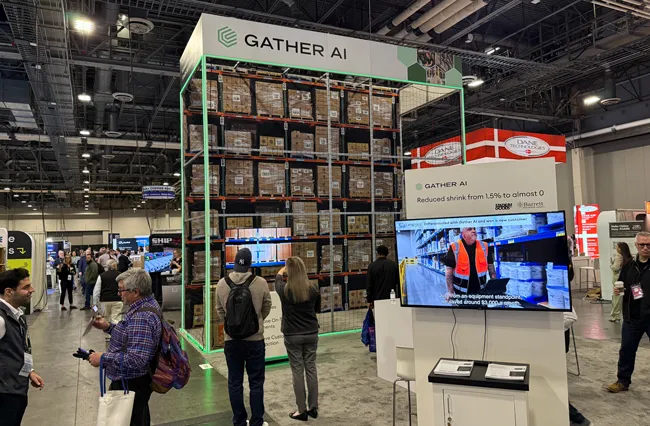
Warehouse automation, like what Gather AI provides, was among technologies exhibited. (Seth Clevenger/Transport Topics)
Many of those exhibitors highlighted their investments in AI to improve transportation and logistics operations in a variety of ways, such optimizing load planning and inventory management, automating routine tasks, enhancing business intelligence and utilizing unstructured data.
Georgy Melkonyan, founder and CEO of Arnata, demonstrated his company’s “AI agents” for the logistics industry during a presentation at the conference.
“AI is going to change how logistics operates,” he said.
Arnata’s virtual AI agents are trained to perform the core tasks associated with various job roles, including a carrier sales specialist that requests quotes and negotiates with carriers to cover loads.
Other examples include logistics coordinator, scheduling specialist, compliance specialist, rate analyst and customer support. Users also can create their own customized AI agents to suit their operations.
In an industry where employee turnover rates are often high, logistics companies can mitigate the need to constantly train new workers by deploying AI agents, Melkonyan said.
“They are not going to leave your company,” he said. “They are going to learn over time and become better and better.”
Melkonyan argued that AI will become a necessity for businesses to remain competitive in the future.
“If you don’t adopt AI technologies, your company will die,” he said.
Autonomous driving technology represents another use case for AI in the transportation industry.
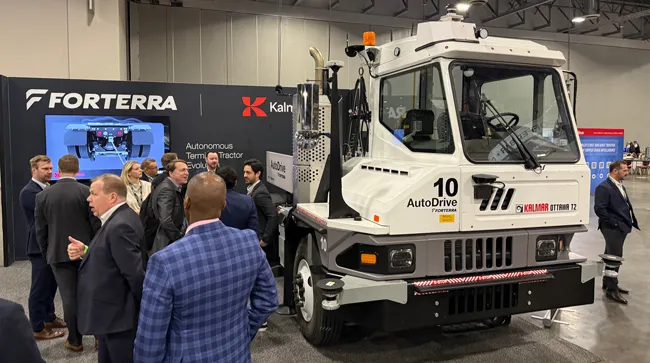
Forterra's Kalmar Ottawa T2 terminal tractor. (Seth Clevenger/Transport Topics)
On the Manifest show floor, self-driving vehicle developer Forterra showcased its AutoDrive system installed on a Kalmar Ottawa T2 terminal tractor.
That prototype autonomous yard truck is operational in customer pilots today, with serial production set to begin in the first half of 2026, said Gabe Sganga, Forterra’s vice president of commercial growth.
An important innovation for #autonomous yard trucks: @ForterraDrive is showcasing an automated trailer coupling system from Electrans that connects with a specialized faceplate developed by @StoughtonTrlrs at #Manifest2025. @Kalmarglobal pic.twitter.com/DM7JIsvCM9 — Seth Clevenger (@SethClevenger) February 11, 2025
The vehicle demonstrated a crucial capability for fully autonomous yard moves — automatic trailer coupling. The terminal tractor was equipped with an automated coupling system from Electrans Technologies that automatically connects the trailer gladhands to a specialized trailer faceplate developed by Stoughton Trailers.
That system enables the unmanned terminal tractor to hook a trailer without the help of a human worker, clearing the way for fully autonomous operation in the yard environment.
“I think that’s the secret sauce that changes this entire conversation,” Sganga said. “You can unlock all the autonomy.”
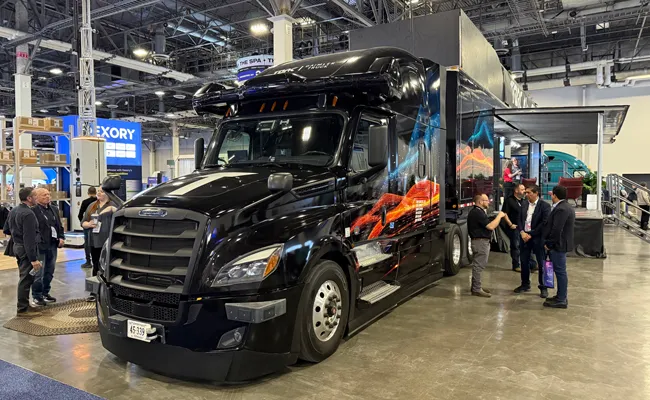
Torc showcases its autonomous technology on a Freightliner Cascadia. (Seth Clevenger/Transport Topics)
Elsewhere in the exhibit hall, Torc Robotics showcased its own autonomous driving technology on a Freightliner Cascadia. The independent subsidiary of Daimler Truck aims to commercially launch fully autonomous heavy-duty trucks in hub-to-hub highway operations in 2027.
Want more news? Listen to today's daily briefing below or go here for more info:





